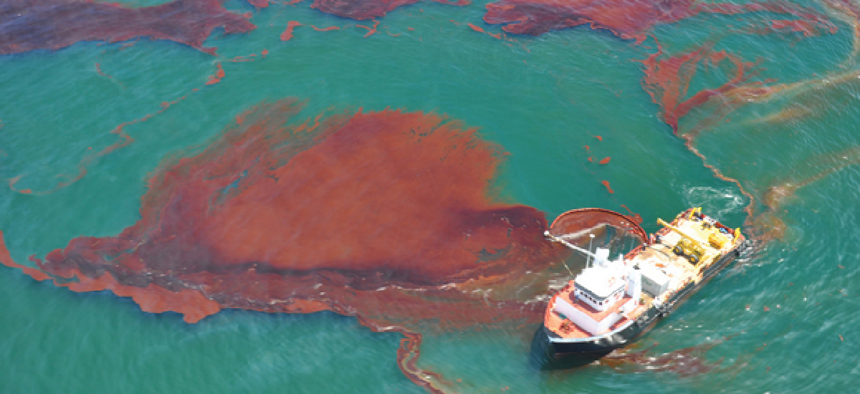NOAA opens data warehouse on Deepwater Horizon spill


Connecting state and local government leaders
The National Oceanic and Atmospheric Administration created an integrated platform for data collected from the Deepwater Horizon oil spill in 2010.
The National Oceanic and Atmospheric Administration has created a one-stop-shop for data collected from the Deepwater Horizon oil spill. The Data Integration, Visualization, Exploration and Reporting tool, or DIVER as the site is called, manages and integrates data from the myriad sources that collected information during the five years following the Deepwater Horizon spill.
Before DIVER, validated data was posted on www.gulfspillrestoration.noaa.gov as soon as it was available, but in discrete files. The DIVER data warehouse uses industry standards for open source big data to integrate and synthesize various data types -- including chemistry results, photos, instrument collections and observational reports on dolphin and oyster health -- drawn from a wide range of sources.
DIVER also allows for unprecedented filtering and downloads of such data, which include over 53,000 samples of water, tissue, oil and sediment, and some 3.8 million analytical determinations. Additionally, a custom query tool called DIVER Explorer allows users to refine their queries and get results presented in the form of maps, charts, tables and metadata, with export options.
“NOAA pledged from the start of the Deepwater event to be as transparent as possible with the data collected,” said NOAA Administrator Kathryn D. Sullivan. “The DIVER data warehouse approach builds upon that original pledge and is another significant step in making NOAA’s environmental data available for the research community, resource managers and the general public.”
Furthermore, DIVER provides information regarding the actual datasets as well as NOAA’s approach to creating “common data models,” which NOAA describes as supporting data synthesis and analysis. By providing detailed access to the Natural Resource Damage Assessment (NRDA) data schemas and field definitions, NOAA said it hopes to foster increased collaboration across the scientific community.
Much of the information included in DIVER’s data sets is derived from federal, state, academic and non-governmental organizations.
As additional datasets become publicly available they will be added to DIVER, and also be made available through NOAA’s Environmental Response Management Application Gulf Response and the Gulf Spill Restoration website, which maintained by NOAA on behalf of the Deepwater Horizon NRDA Trustees.




